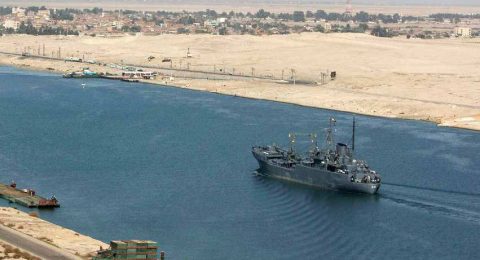Saudi Arabia is undoubtedly one of the world’s leading oil producers whose proven reserves have serviced the world for the past half a century. But are they truly the powerful world oil supplier that they claim to be? Matthew R. Simmons’ book Twilight in the Desert: The Coming Saudi Oil Shock and the World Economy, scrutinizes the Saudi claim to oil fame.
Simmons skepticism towards Saudi Arabia’s reserves is based on, among other things, the growing demand for oil in the global market. Global demand has increased by 14 million barrels/day in ten years, most of which stems from the growing economies of China and India. Of this demand, 74% is supplied by Middle East oil. Saudi Arabia, with 36% of the Middle East’s reserves, is the largest oil producer in the world and is currently producing at close to its sustainable rate.
The author essentially questions the nation’s guarantee to consumers that it can provide them with the oil they need. Keeping in mind that Iran’s reserves peaked in the 1970s and the reserves of Kuwait, Syria, Oman, Iraq, and Yemen have all passed their peak output; Simmons fixes a suspecting eye on Saudi’s enthused attitude towards its own oil fields.
Beginning with a description of the oil rich kingdom, the book traces its oil history from its inception to the present. The author attempts to present the reader with a clear look at Saudi Arabia’s importance to the world. He portrays the beginnings of the country’s national oil company, Saudi Aramco, and examines the kingdom’s secrecy regarding its giant and super-giant reserves.
The book then offers an in-depth analysis of the country’s oil and gas sector as well as Saudi Aramco, the organization that mainly controls the sector. It discusses the strengths and weaknesses of the company and generally outlines its activities. In addition, Simmons criticizes the company’s inventory records, which list several discoveries that have never produced substantial magnitudes of oil.
Moving on to a detailed examination of Saudi Arabia’s oil fields, the author conducts a thorough literature review, relying on over 200 papers written by engineers and scientists from the Society of Petroleum Engineers (SPE) to analyze the country’s current and expected future production.
Simmons dissects proven reserves, which amount to 260 billion barrels, and probable reserves, which equate to another 200 billion barrels. He suggests that if Saudi Arabia, which now produces 9.5 million barrels a day, is truly to continue its reign as the top oil producer then exploration is the answer. However, with 80 new discoveries yet to produce significant finds, the small nation has already explored much of its land.
In examining the Saudi position further, Simmons plots the production of these reserves against not only international demand, but also domestic consumption and the outcome appears dreary to say the least.
Simmons does not solely argue against the Saudi government’s statistics, but also against the Energy Information Administration (EIA) and the International Energy Agency (IEA), who, using supply models, have assumed that Saudi Arabia’s oil can double or triple in output. His main argument is that none of the facts used in these models are verified by an audit from a third party. His main concern is that Saudi Arabia, much like most large oil-producing countries, has vehemently refused to provide data that would substantiate their production levels or reserve claims.
Referencing the last verified assessment of proven reserves, which was conducted in 1979, Simmons points out that those proven reserves stood at 110 billion barrels and 77 billion in probable reserves, 63 billion barrels of which have been produced since the assessment. Based on Hubbert’s simple yet ingenious theory of peak oil, once half of that oil has been produced, technically it should start to decline. However, Saudi Arabia claims to have another 200 billion barrels in possible reserves, thereby contradicting the peak oil theory.
The Kingdom claims that it can maintain its current production rate and maybe even raise it to 10.5 million barrels a day. Yet most of the reserves are concentrated in a small strip of land that come to approximately 120 miles and most of these wells are aging fields that are now being flushed out with water in order to push their oil out. This, for obvious water shortage reasons, cannot continue for long. Hence, new wells are needed in order for production to be maintained, but as previously discussed the existence of these wells, until verified by audited data, remain tentative at best and illusory at worst.
Simmons concludes his tome by using his data from previous chapters relating to global demands and Saudi oil and gas expectations to illustrate a nation with fickle data and overly optimistic prospects. In essence, it boils down to the fact that Saudi Arabia is over producing its oil reserves, which is problematic because the faster the production of a well the faster the high reservoir pressures end. In fact, based on the findings of the author it is not implausible that the country has already passed its peak output. If this is true, not only has the nation’s oil peaked, but so has the world’s oil supply.
The author argues that the world’s reliance on Saudi Arabia’s oil is false hope, which, when shattered, will spell explosive oil prices and ultimately an immense energy deficiency. As such, the world must first understand the crisis before it can solve it. It must properly manage what little non-renewable energy is left and allocate it appropriately. In addition, the book suggests that when oil prices inevitably peak, a management of the revenues must also be prepared for and should be spent on the research and development of new energy sources.
Simmons firmly stresses that the world’s peak oil point will come, likely sooner rather than later. If this is true, then a transition to energy efficiency is essential. He emphasizes that the world must awake to the truth of oil exhaustion. He finalizes his work by proposing that the world address the critical issue of non-renewable energy depletion by pursuing alternative energy. He hypothesizes that the future will belong to solar and wind rather than oil and gas.
Matthew R. Simmons received his MBA from Harvard University. He is now the Chairman and Chief Executive Officer of Simmons & Company International, an investment bank specializing in oil services and one of the largest energy investment banking groups in the world. Simmons created the bank in 1974, following the 1973 oil shock. He currently serves on the Board of Directors of Kerr-McGee Corporation, Brown-Forman Corporation, The Initiative for a Competitive Inner City, Houston Technology Center and the Center for Houston’s Future.







